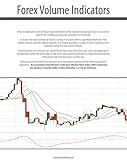Best Money Flow Index Tools to Buy in December 2025
The Money Flow Index (MFI) is a technical analysis tool that measures the strength and intensity of money flowing in and out of a particular security or asset. It is often used by traders and investors to identify potential overbought or oversold conditions in the market.
To calculate the MFI, you need to consider four components: typical price, positive money flow, negative money flow, and the MFI ratio.
The typical price is the average of the high, low, and closing prices for a given period. Positive money flow is the sum of money flowing into the security on days when the typical price increases, while negative money flow is the sum of money flowing out on days when the typical price decreases.
The MFI ratio is calculated by dividing the positive money flow by the negative money flow. It is then normalized to fall within a range of 0 to 100 using the formula: MFI = 100 - (100 / (1 + MFI ratio)).
The MFI values are plotted on a chart, typically below the price chart, and range between 0 and 100. Generally, an MFI reading above 80 is considered overbought, suggesting the security may be due for a price correction or reversal. Conversely, an MFI reading below 20 is considered oversold, indicating a potential buying opportunity.
Traders often use divergences between the MFI and price to identify trend reversals. For example, if the price of a security is making lower lows, but the MFI is making higher lows, it could signal a bullish divergence, implying a potential uptrend.
It's important to note that the MFI is just one tool among many in technical analysis and should not be relied upon solely for making trading decisions. It is recommended to use it in conjunction with other indicators and analysis methods to confirm signals and increase the probability of successful trades.
How to interpret Money Flow Index (MFI) when trading volume is low?
When trading volume is low in relation to the Money Flow Index (MFI), it can affect the interpretation of the indicator. The MFI measures the flow of money into and out of a security based on both price and volume, indicating the strength of buying and selling pressure.
When trading volume is low, it typically means there is less participation and interest in the market. This can result in fewer transactions and potentially less reliable signals from the MFI. Here are a few considerations when interpreting MFI in low trading volume situations:
- Decreased Accuracy: MFI relies on both price and volume data to calculate its values. With low volume, the accuracy of MFI signals may reduce as there are fewer participants influencing the price movement. Signals from MFI may be less reliable during periods of low trading volume.
- False Signals: Low trading volume can result in increased volatility and potential false signals. Smaller trades can have a magnified impact on price movements and may result in false overbought or oversold readings on the MFI. It's important to exercise caution when relying solely on MFI signals in low volume situations.
- Lack of Confirmation: MFI signals are typically more reliable when they align with other technical indicators or price patterns. However, when trading volume is low, it may be challenging to find confirmation from other indicators or market data. It's advisable to consider the overall market context and use additional indicators to support MFI signals during low volume periods.
- Avoid Extreme Interpretations: When trading volume is low, extreme MFI readings should be treated with caution. Extreme oversold or overbought levels may not accurately reflect the market sentiment due to insufficient participation. It's crucial to exercise patience and wait for confirmation before making trading decisions based on MFI signals.
In conclusion, when trading volume is low, interpreting the Money Flow Index (MFI) requires additional caution. While the MFI can still provide insights into buying and selling pressure, it's advisable to supplement its signals with other technical indicators and market data to enhance reliability and confirmation.
How to use Money Flow Index (MFI) as a confirmation tool for price patterns?
The Money Flow Index (MFI) is a technical indicator that measures the strength and weakness of money flowing into and out of a particular asset. It is often used as a confirmation tool for price patterns to validate their reliability. Here's how you can utilize the MFI as a confirmation tool for price patterns:
- Identify price patterns: First, identify the price patterns you want to analyze, such as double tops/bottoms, head and shoulders, triangles, etc. These patterns often indicate a potential reversal or continuation in the price movement.
- Analyze the MFI: Plot the MFI below the price chart. The MFI oscillates between 0 and 100, indicating overbought and oversold conditions. Look for instances where the MFI confirms the price pattern you identified.
- Confirming bullish patterns: If you have identified a bullish price pattern, such as a double bottom or an ascending triangle, look for the MFI to show positive divergence. Positive divergence occurs when the price makes a lower low, but the MFI makes a higher low. This suggests that buying pressure is increasing, confirming the potential reversal or continuation to the upside.
- Confirming bearish patterns: If you have identified a bearish price pattern, such as a double top or a descending triangle, look for the MFI to show negative divergence. Negative divergence occurs when the price makes a higher high, but the MFI makes a lower high. This suggests that selling pressure is increasing, confirming the potential reversal or continuation to the downside.
- Consider overbought/oversold conditions: Additionally, pay attention to extreme overbought or oversold conditions on the MFI. If the MFI reaches extremely high levels (above 80), it may indicate an overbought market and suggest a potential price reversal. Conversely, if the MFI reaches extremely low levels (below 20), it may indicate an oversold market and suggest a potential price reversal.
- Combine with other confirmation tools: Remember that the MFI should not be used in isolation. It is essential to combine it with other technical analysis tools, such as trendlines, support and resistance levels, moving averages, or other indicators for a comprehensive analysis.
By using the Money Flow Index as a confirmation tool for price patterns, you can gain additional confidence in the potential accuracy of the identified patterns.
How to use Money Flow Index (MFI) for trading multiple time frames?
To use the Money Flow Index (MFI) for trading multiple time frames, you can follow these steps:
- Understanding the MFI: The MFI is an oscillator that measures the inflow and outflow of money into a security over a specific period of time. It ranges from 0 to 100, where a reading above 80 indicates overbought conditions and below 20 indicates oversold conditions.
- Determine your primary time frame: Identify the primary time frame you want to trade. This could be the daily chart, for example.
- Analyze the MFI on the primary time frame: Apply the MFI indicator to your primary time frame to identify potential overbought or oversold conditions. Look for divergences between price and the MFI, which can indicate potential trend reversals.
- Identify significant MFI levels: Note the significant MFI levels on your primary time frame. These levels could act as key support and resistance areas.
- Zoom in to lower time frames: Once you have identified potential trading opportunities on your primary time frame, zoom in to shorter time frames (e.g., 1-hour or 15-minute charts).
- Confirm with MFI on lower time frames: Apply the MFI to the lower time frames and look for confirming signals. For example, if the MFI on the primary time frame is indicating an overbought condition, check if the MFI on the lower time frames is also showing overbought conditions. This helps in confirming the strength of the signal.
- Consider other indicators: Use other technical indicators, such as moving averages, trend lines, or volume, to provide additional confirmation of the potential trade setup on multiple time frames.
- Trade setup and entry: Once you have confirmed the trading signals on multiple time frames, you can execute your trade. Decide on your entry points, stop-loss levels, and profit targets based on your analysis.
- Monitor the trade and manage risk: Continuously monitor the progress of your trades and manage your risk accordingly. Adjust your stop-loss levels as per the movement of price to secure profits or limit losses.
Remember, using multiple time frames allows you to have a broader perspective on the market and can increase the probability of successful trades. But always ensure to practice risk management and use proper trade sizing according to your risk tolerance.
How to use Money Flow Index (MFI) to identify exhaustion points in a trend?
The Money Flow Index (MFI) is a technical indicator that measures the intensity of money flowing into or out of a stock or an asset over a given period of time. It can help identify exhaustion points in a trend when the buying or selling pressure is becoming unsustainable. Here's how you can use the MFI to identify exhaustion points:
- Calculate the MFI: The MFI is calculated using the following steps: a. Determine the typical price (TP) of each period: (High + Low + Close) / 3 b. Calculate the raw money flow (RMF): TP * Volume c. Determine the MFI ratio: (14-day Positive Money Flow) / (14-day Negative Money Flow) d. Calculate the MFI: 100 - (100 / (1 + MFI ratio))
- Interpret MFI values: The MFI oscillates between 0 and 100. A high MFI value above 80 indicates overbought conditions, implying that the buying pressure is too high and a price correction may occur soon. Conversely, a low MFI value below 20 indicates oversold conditions, suggesting that selling pressure is excessive and a potential price rebound may happen.
- Look for divergences: Pay attention to divergences between the price and the MFI. If the price is making higher highs while the MFI is making lower highs, it can signal weakening buying pressure and a potential trend reversal. Similarly, if the price is making lower lows while the MFI is making higher lows, it can indicate weakening selling pressure and a possible upward trend reversal.
- Monitor overbought/oversold levels: When the MFI is consistently staying in the overbought or oversold territory for an extended period, it may signify that the trend is reaching an exhaustion point. In such cases, be prepared for a potential trend reversal.
- Confirm with other indicators: To increase the reliability of MFI signals, consider using it in conjunction with other technical indicators, such as moving averages or trendlines, to confirm potential exhaustion points in a trend.
Remember, the MFI is not a standalone indicator but should be used as part of a comprehensive analysis approach. Using it in conjunction with other technical indicators and fundamental analysis can provide a more robust assessment of potential trend exhaustion.





